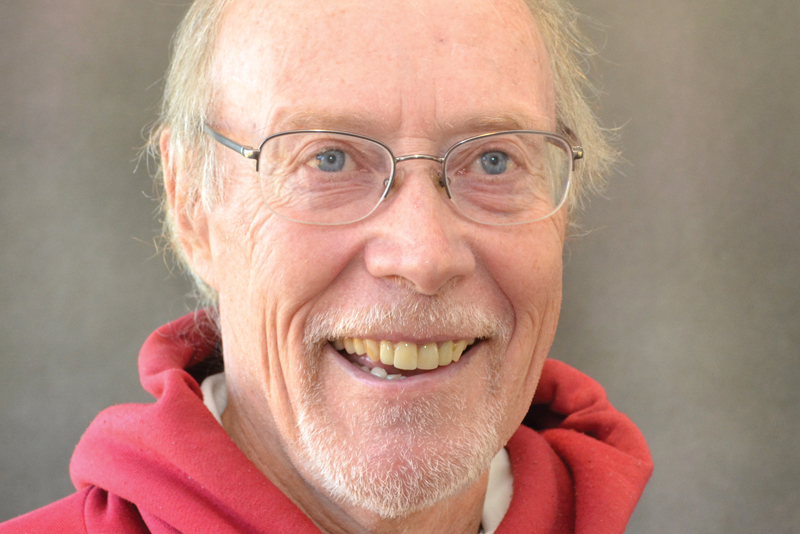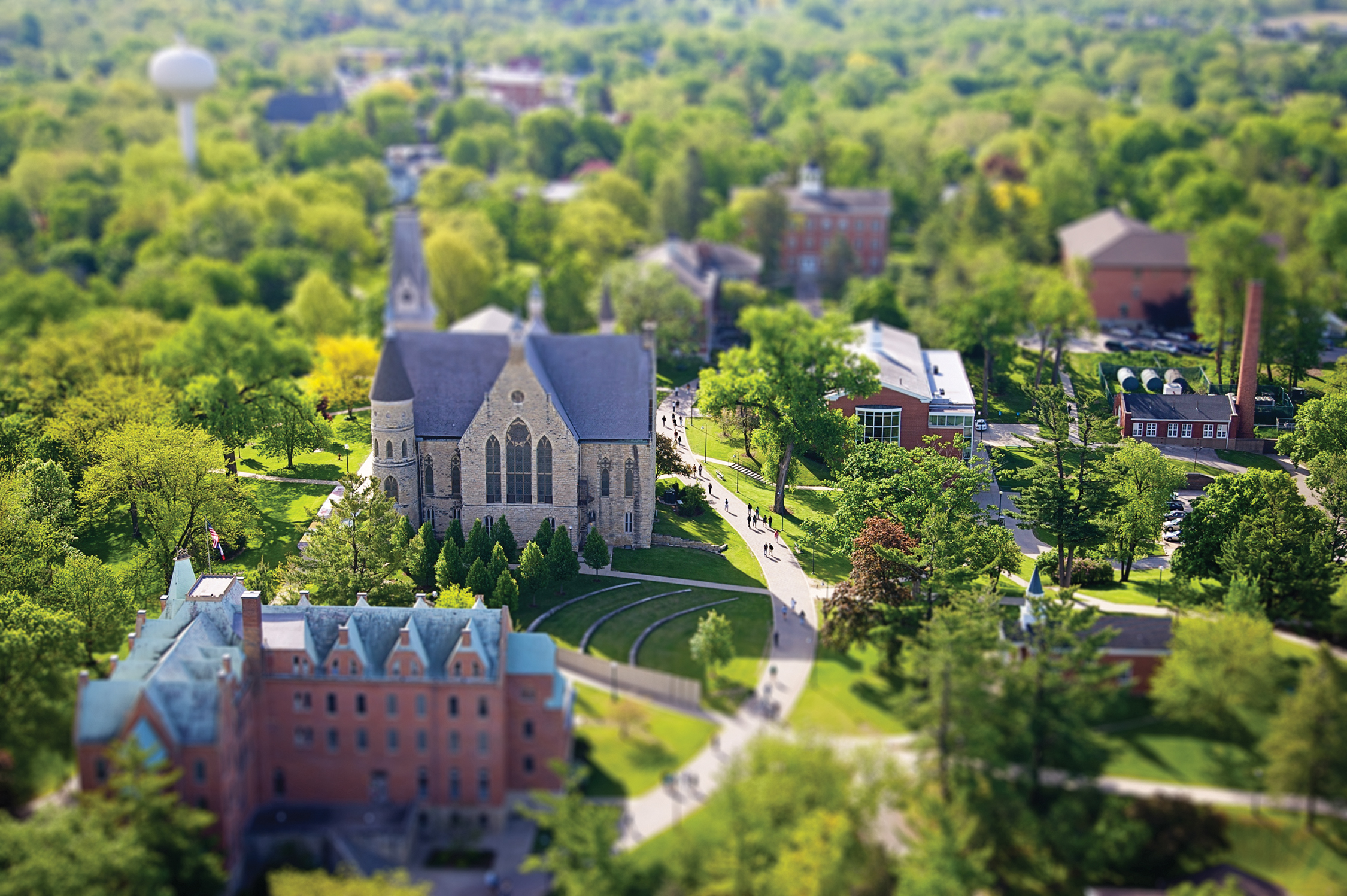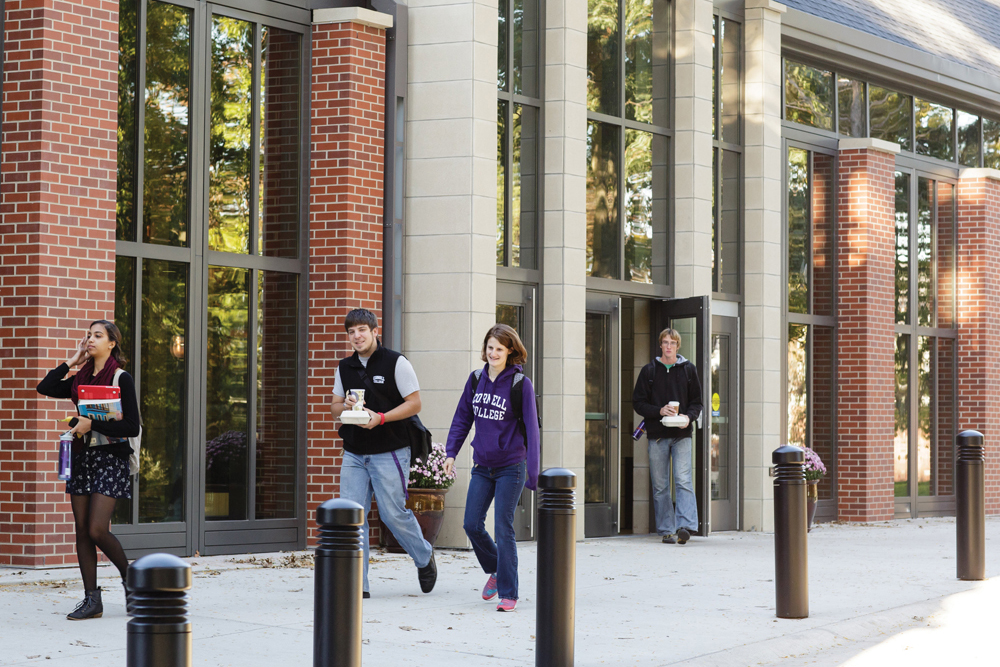
Changing lives: The future of Cornell
The liberal arts are not like a static museum exhibit, mounted behind glass. Rather, they are part of today’s world, and they are changing, as they have so many times before. The name of Cornell College’s strategic plan reflects that fact: “Re-imagining the Liberal Arts Experience.”
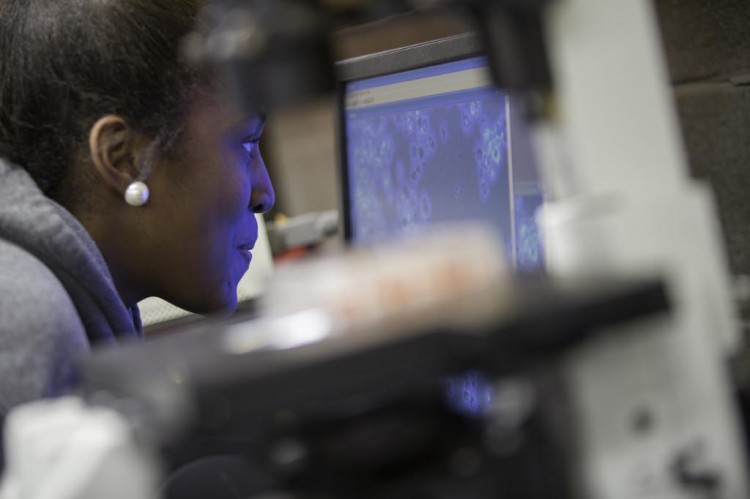
If that sounds ambitious, it should. Over the next seven to 10 years, the college has set the goal of examining what a 21st Century liberal arts college should be providing. It started with college leaders asking questions of students, alumni, parents, faculty, and staff about what Cornell does well and what it needs to change. Those questions resulted in a strategic plan published in the spring. But that wasn’t the end—only the beginning.
“Some schools make a strategic plan and it just sits on the shelf,” President Jonathan Brand said. “This plan is a living document, one that’s going to evolve as time passes, and reflect the world we live in.”
The plan has major and minor goals, but in the end, it’s about one thing: a stronger Cornell. Stronger means bigger in some ways. Growth has been part of the college’s plan for years now. The plan addresses the reasons for growth early on.
From the plan: “At the highest level, nothing could be more pressing than the reality that our future requires institutional growth, especially in light of the challenging economic environment. Simply put, growth is central not only to Cornell’s long-term viability but also to its long-term ‘thrivability.’ Sustaining Cornell is not enough; we also wish to thrive in even more profound ways as a residential liberal arts college of the highest caliber. This will only be possible as a result of strategic growth, achieved in a manner that retains what is distinctive and special about us. Without such growth, we risk the future of Cornell College.”
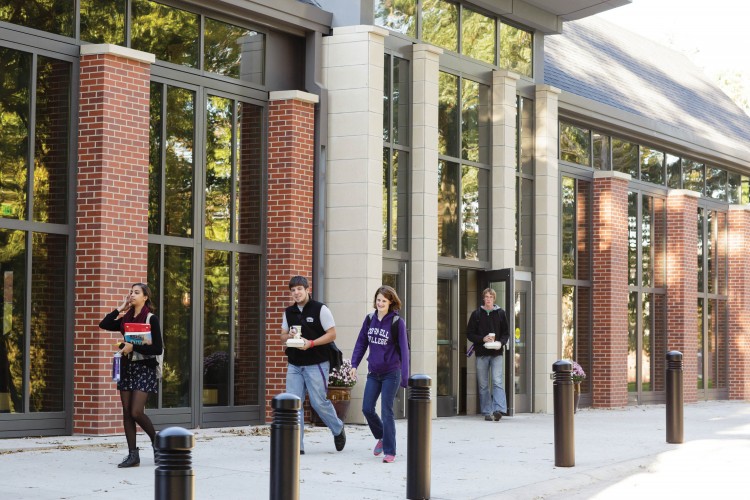
on campus. New and renovated facilities are essential to drive growth, including the Thomas Commons, which is nearing the end of a two-year-long renovation and expansion.
So growth, yes, but not growth for its own sake. Cornell has always been small, even compared to most other liberal arts colleges, like those in the Associated Colleges of the Midwest. The plan is to grow enrollment to 1,600 students over the next 10 years by adding new course offerings and faculty, and improving facilities. Those changes, and an increase in enrollment, will make Cornell more attractive to students, and also bring in more revenue, making the college better able to withstand financial shocks. There are other advantages, too, including increasing the number of alumni, which in turn makes student and alumni networks stronger, and achieving economies of scale.
Enrollment growth is a tricky subject. One of the things that students and alumni love about Cornell is the close-knit, small community. But adding students won’t mean changing the values of the community. College Dean Joe Dieker said that many small liberal arts schools have increased their enrollment and still have kept their distinctive cultures. And even at 1,600 to 1,800 students, Cornell will still be a small school.
Because the culture is so important, developing a plan for growth had to be a communal effort. Ben Greenstein, associate dean of the college and professor of geology, led the strategic planning effort, and the committee worked to involve members of the campus community in every step along the way. Students, faculty, staff, alumni, and trustees all had the chance to make their voices heard. “The entire community has to be involved,” he said.
And from that communal effort came a plan to support the growth of the college, focused on three main goals: Re-imagining the residential liberal arts experience, increasing Cornell’s visibility, and maintaining a beautiful, well-purposed historic campus.
The Plan
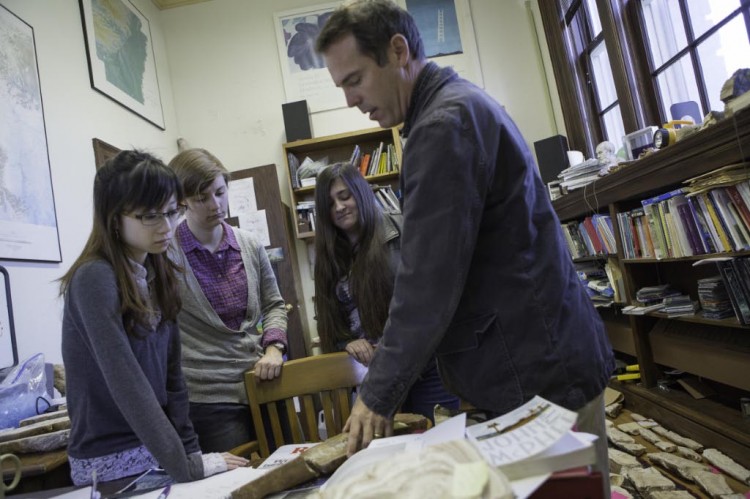
The first goal may be the most ambitious—to reimagine what the residential liberal arts experience looks like. That will include expanding what the college offers, to make sure that the curriculum and co-curricular activities at Cornell match up with the needs of a new generation of students. And we’ve already started. The college has hired men’s and women’s lacrosse coaches and will field its first lacrosse team in the 2014–15 academic year. Lacrosse is exploding in popularity across the Midwest, and offering it should attract students who otherwise might not look at Cornell. The faculty will spend this academic year looking at what programs the college might add, and what might need to be changed.
But the re-imagination is about more than just courses; it’s about the way courses are taught, the kinds of experiences students have outside the classroom, and, perhaps, most importantly, the way those experiences are measured.
Many other colleges are focused on outcomes, Brand said, and they work to measure how each course a student takes relates to those outcomes—writing or critical thinking, for example. Cornell has developed a list of the skills and attributes a successful graduate needs, and is determining how best to measure how every aspect of campus life, from courses to residential life to co-curricular activities, reinforce those attributes and skills. Cornell is focusing on knowledge, of course, and communication skills, but also reasoning, ethical behavior, intercultural literacy, citizenship, and well-being. No other college does something so comprehensive, Brand said, and it’s a key aspect to ensure the college’s success and distinctiveness.
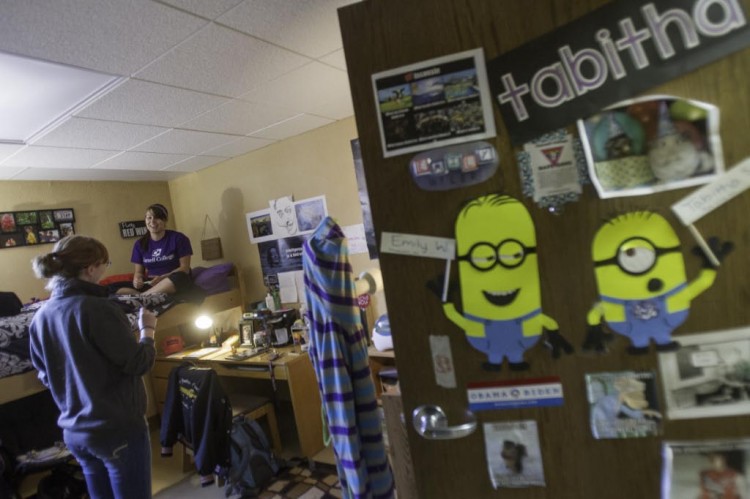
The next goal is to make sure people know about that distinctiveness. That requires an entirely new way of thinking about the way the college markets itself to prospective students. Students who come to Cornell love the college, love One Course At A Time, and love the community. Brand said, “What we need to do differently is be more clear about why students should choose Cornell, and how to establish an emotional connection with prospective students.”
Part of that is making it clear that a liberal arts education, and particularly a liberal arts education at Cornell College, is valuable.
Greenstein said there is a false dichotomy in the minds of some people that students can either learn a trade and get a job or study at a liberal arts college, and that the two types of education are mutually exclusive. “In this world it’s critical that they inform each other. So that’s a dichotomy I think the strategic plan addresses.”
In some ways Cornell faces an even more difficult battle, as some prospective students and their parents mistakenly worry the college’s One Course At A Time curriculum doesn’t prepare students for life after college. The combination of the liberal arts and One Course At A Time is tremendous preparation for the world of work, and alumni already know that, said Jim Brown, special assistant to the president.
“A number of alumni responses to the alumni survey last year in fact say that One Course At A Time reflects what happens in their lives after Cornell. There are very few jobs that ask you to turn in something 13 weeks later; they want it Friday. It’s that kind of rhythm of getting right to something and approaching it, finishing up and moving on to the next thing. These alumni claim that focus and concentration was terrific preparation, so that’s part of what we want people to recognize.”
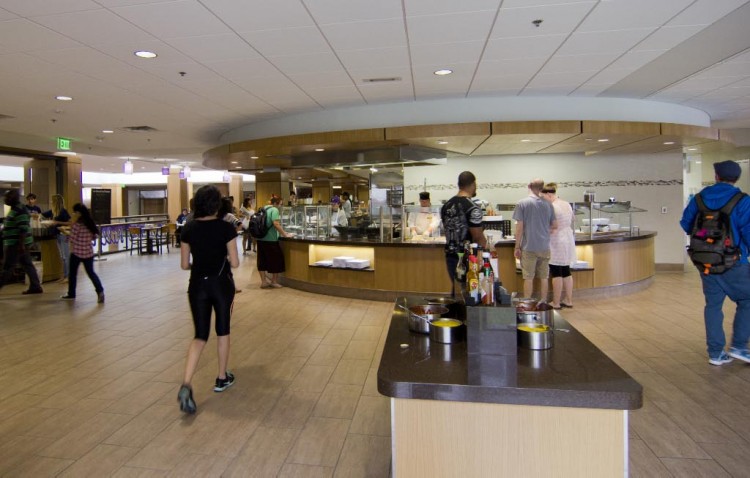
And, of course, students aren’t just taking courses. They’re athletes, they’re artists, they’re involved in clubs and organizations, and they’re volunteering. They are multi-tasking, and, by doing so, are being well-prepared for life after graduation.
That’s part of the reason the college wants to measure outcomes, so that it can clearly show prospective students and their families that a Cornell education—the entire Cornell experience—is preparation for a rich, fulfilling life.
In order to do the things the plan calls for, and, indeed, in order to increase enrollment, Cornell needs to grow physically as well. That means more classroom space, improved athletic and recreational facilities, and, of course, more housing for students. Cornell will remain a residential liberal arts college, with a small number of students living off campus. Brown is leading a campus master planning group this year to determine what projects should get priority. No matter what the order, things like new residence halls, new classroom buildings, improved athletic and wellness facilities, and a renovated and expanded West Science need to happen within the next decade.
The planning process, which included hiring a consultant, will help guide the timing of decisions, Brown said. “We need to know what we need to support the additional number of students we expect to come, and the additional academic programming and co-curricular programming, and in what order we need to improve and modify facilities to integrate all of these. We have to figure out how we’re going to deploy our monetary resources carefully in order for the deployment to go in conjunction with how the college changes over the next 10 years.”
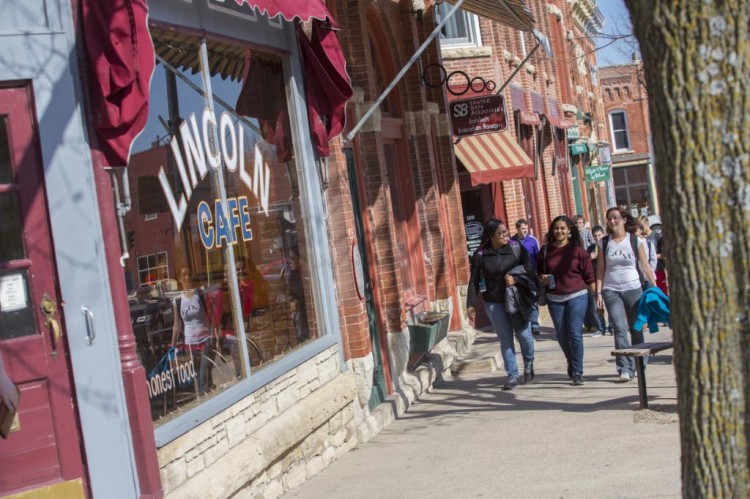
Some parts of the plan are either already in progress or completed, such as the renovation and expansion of the Thomas Commons, renovations in Olin Hall, the installation of synthetic turf in Ash Park, the installation of an elevator in King Chapel, and the opening of the Wilch apartments. Each of these plays a role in making campus more attractive to students, and helping to keep students enrolled at Cornell.
A major part of the plan is an expanded and renovated West Science. The sciences, including Dimensions: The Center for the Science and Culture of Healthcare, already account for a large portion of enrollment, so more space is necessary. The 1976 building can no longer keep up with what Cornell wants to offer in the sciences, let alone any changes or improvements to those offerings. Dieker said the project could cost $50 million. Other schools have spent similar amounts on science centers in recent years. A new science center is opening this fall at Monmouth College, for example, and cost $40 million. Beloit College spent nearly that much on a science center than opened in 2008.
Athletics, too, drive enrollment, as does having an attractive, state-of-the-art wellness center for student use. There are several phases of planned athletics improvements, including a better baseball field and lighting for Ash Park. Also in the plan is a major renovation of the Richard and Norma Small Multi-Sport Center, tentatively scheduled for 2020, that could cost as much as $15 million.
New and renovated facilities are essential to drive growth. As more students enroll, more money will be available for programs and courses, Dieker said, but some work needs to be done before more students can enroll, and the college will need the support of alumni to make that happen.
Measuring Success
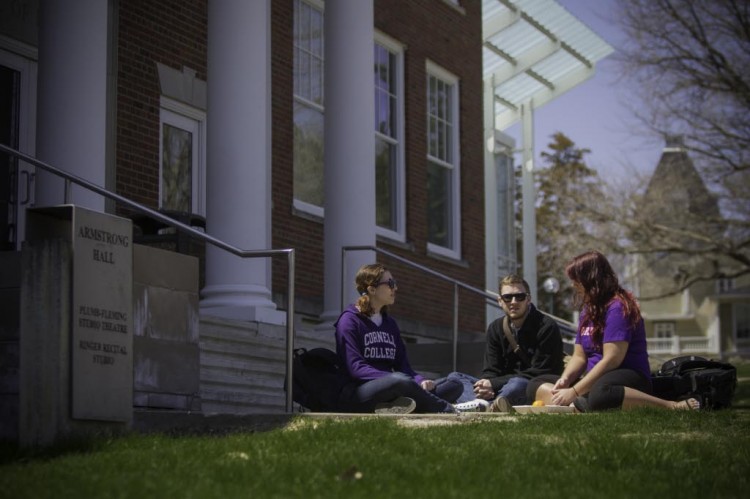
Implementing the plan is going to require time and money. Community buy in throughout the process is thus very important, and the strategic planning committee has been careful to make sure people feel included in the process, both at the beginning, and throughout the implementation.
“They need to be on board, they need to feel they are included and have a sense of what is happening,” Greenstein said. “Certainty is really important.”
And, he added, the college is making these plans with its larger mission and values in mind. These are not changes made for their own sake. “We know who we are and where we’re going. That’s half the battle.”
The community seems to be united in what it’s looking for. The surveys that went out to faculty, students, staff, and alumni all came back with similar results, with each group in general agreement about what’s most important for the college.
That has a lot to do with the college making a strong case for necessary changes, Dieker said. “We are poised for this and we have been preparing for this.”
Now that people have been convinced and the plan is in place, the question is: What does success look like?
The first metric is growth—enrolling 1,600 students, and graduating most of them in four years. Another is financial stability. That includes an endowment of $100 million or more—up from about $70 million presently—along with alumni giving participation at 30 percent or more, and increased net tuition revenue. Finally, there are the facility needs, including classrooms and housing for the increased enrollment, modernized classroom facilities, and regular upkeep around campus.
But ultimately, success looks like this: Cornell in 10 years is thriving, financially stable, turning out engaged graduates who are prepared to make the world a better place, and the college has implemented its ideas about how to educate the next generation of liberal learners.
“I think we have a compelling vision for the future,” Dieker said, “and I think the whole idea of re-imagining the liberal arts experience at Cornell is really important.”
-
Cornell’s chance to innovate
Peter McCormick ’65, a philosophy professor at Coe College, thinks Cornell’s distinctive One Course At A Time curriculum, along with its tradition of liberal arts education, put it in an excellent place to innovate.
-
Alumni shaping their role in Cornell’s future
The strategic plan sends a strong signal to more than 15,000 Cornellians worldwide: they are an integral piece of the college’s future.

